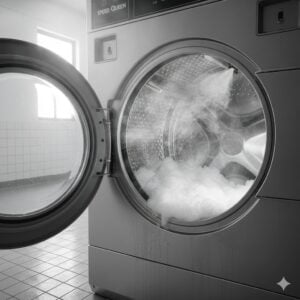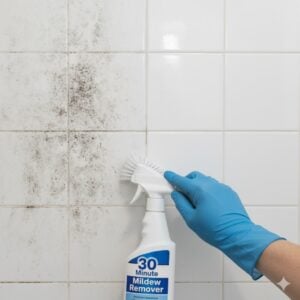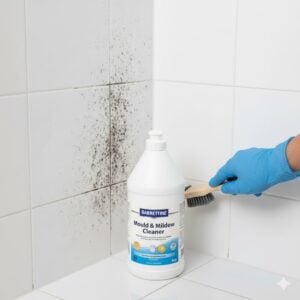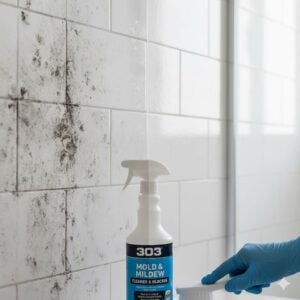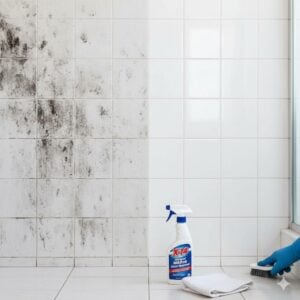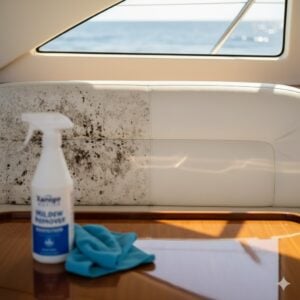A leaking ceiling in the kitchen is more than an annoying drip—it’s a real risk to your safety, your cabinets, and your budget. Water can weaken gypsum boards, swell wood, damage electrics, and trigger mold within 24–48 hours, especially in the UAE where humidity and AC systems can speed things up. The good news? With a calm plan and a few smart checks, you can limit damage, find the source faster, and get the right help. Below, we walk you through exactly what to do now, how to diagnose common causes in UAE apartments and villas, and how to dry properly so mold doesn’t take hold.
Table of Contents
Toggle1) First things first: stay safe and limit the damage
Before investigating the cause, make sure your kitchen—and everyone in it—is safe. Water and electricity don’t mix, and wet ceilings can collapse when saturated.
- Turn off electricity to the kitchen zone at the breaker if water is near lights, downlights, switches, or appliances. If you’re unsure, play it safe and shut the whole unit briefly.
- Stop the water at the nearest shutoff: close the kitchen sink valves (hot/cold) and, if needed, the main water valve for the unit or villa. If you suspect AC condensate, switch the AC off for the affected area.
- Protect your space: Move small appliances, cover countertops with plastic or towels, and place a bucket under the drip. If the ceiling is bulging, carefully poke a small hole at the lowest point to drain water into a bucket—this can prevent a sudden, messy collapse. Only do this after power is off and away from any fixtures.
- Take photos/videos of the leak and wet areas for building management, insurance, or your landlord.
Once you’ve made things safe, you can start narrowing down the cause.
2) The most common causes (UAE-specific)
Kitchen ceiling leaks in the UAE usually come from one of four buckets. Knowing these helps you troubleshoot quickly:
- Plumbing supply leaks (pressurized): Constant dripping even when no one is using water often means a pressurized line. Think: the apartment above’s kitchen/bath, your own hidden hot/cold pipes in the slab, or the line feeding a fridge/ice maker or dishwasher. Supply leaks tend to be continuous and can flood fast.
- Drain/fixture leaks (non-pressurized): Drips that start only when someone washes dishes, runs the dishwasher, or uses the bathroom above suggest a waste/drain issue, failed P-trap, or failed sealant around a shower/terrace above.
- AC condensate problems: Blocked condensate lines, cracked drain pans in a ceiling cassette/ducted unit, or negative slope on the drain can send water into gypsum. These often appear during peak AC usage, with clear (not soapy) water and no odour. You might hear a faint dripping near an access panel.
- Building envelope/roof or balcony runoff: During heavy rain, water can migrate from roof/terrace waterproofing, window frames, or balcony drains, then appear at your kitchen ceiling. In multi-storey towers, terrace drainage above is a frequent culprit.
3) Quick tests to help you pinpoint the source
These simple checks can save you hours of guesswork and help the right technician fix it on the first visit.
- Timing test: Does the leak worsen only when someone uses a tap, shower, or dishwasher? That points to a drain/fixture issue. If it’s constant, think pressurized supply or AC condensate in continuous use.
- Water look & smell: Clear, odourless water suggests AC condensate or supply line. Soapy/greasy water hints at a kitchen drain. Musty smell means water has been sitting—watch for mold risks.
- AC isolation: Turn the AC for that zone off for a few hours. If dripping slows or stops, suspect condensate drainage or pan overflow.
- Appliance isolation: Don’t run the dishwasher for a day; watch the leak. If it stops, check the dishwasher supply hose, drain hose, and door seal.
- Above-unit coordination: In apartments, call building management and politely ask if the neighbour above can run a quick “use test” (tap on/off, shower, flush) while you observe below.
| Clue | Likely Cause | Next Step |
|---|---|---|
| Drip 24/7 | Pressurized supply line | Shut main, call plumber via building |
| Drip only during sink/dishwasher use | Drain or appliance hose | Inspect hoses, P-trap, seals |
| Worse with AC on | Condensate line/pan | Service AC, clear drain |
| After rain or balcony wash | Waterproofing/drainage | Notify building; waterproofing check |
4) What to do right now (step-by-step)
Here’s a simple action plan you can follow today to limit damage and speed up recovery:
- Kill the power to the kitchen zone at the breaker if water is near any electric point. Safety first.
- Shut water (kitchen valves, then main if needed). If you suspect AC, turn that unit off.
- Catch and control: Bucket under the drip, towels on the counter, plastic sheet over cabinets. If a bulge forms, drain it safely into a bucket (power already off!).
- Call building management/landlord to report and coordinate access (especially for units above you, common in towers across Dubai and Abu Dhabi).
- Start drying immediately: Open windows (when humidity outdoors is moderate), set up fans blowing across the wet ceiling, and, if possible, run a dehumidifier in the kitchen.
- Document everything with photos and short clips—location, timing, what makes it worse/better. This helps technicians fix the root cause quickly.
If you see staining spreading, soggy gypsum that crumbles, or a musty odour, plan for a proper dry-out and sanitation. That’s where we come in.
5) Drying properly (and stopping mold within 24–48 hours)
Even clean water can become a mold risk fast. UAE kitchens have warm void spaces above false ceilings—perfect for hidden humidity. Drying correctly is the difference between a simple repair and a long, smelly problem.
- Remove saturated material: Gypsum that sags or crumbles should be cut out and disposed; it won’t regain strength. Don’t just paint over stains.
- Air movement: Use fans to move air across the wet surface. Pointing a fan straight at a small hole can push moisture deeper; keep air moving broadly.
- Dehumidification: A dehumidifier pulls moisture out of the air, helping cavities dry faster. In closed kitchens, this is crucial.
- Sanitize: After drying, apply an antimicrobial cleaner to the affected area and void space to reduce spore load.
- Odour control: If smells linger, HEPA air scrubbers and targeted treatments can clear the air safely.
Mold pricing (for reference): If water sat long enough to feed mold, remediation may be required. Our typical rates are volume-based: up to 1 sq.m. at AED 35/sq.m.; 1–3 sq.m. at AED 30; 3–7 sq.m. at AED 25; 7–10 sq.m. at AED 20; areas over 10 sq.m. get a free inspection. Advanced testing (air quality, surface microscopy, mycotoxins, PCR, humidity & pH, sample analysis) is available at AED 1,000 per test when needed. If you want us to assess whether mold is present or likely, just click the contact button on the right-middle of this post.
6) Fixing the ceiling the right way (once dry)
When moisture is fully resolved and the area is dry, you’re ready to repair the finish:
- Cut and patch: Square off damaged gypsum edges and patch with new board. Re-tape and compound seams.
- Prime for stains: Use a stain-blocking primer (shellac or quality stain-killer) so yellow/brown “tide marks” don’t bleed through the paint.
- Choose smart paint: A mold-resistant, washable paint helps in humid rooms. Pair paint with better ventilation, or the stain may return.
- Re-test: After a week of normal use (cooking, AC on), check for any new marks or odours before final painting.
7) Prevention checklist for UAE kitchens
Once repaired, keep it dry and predictable. Here’s a simple, quick routine that prevents 90% of repeat leaks we see:
- AC service: Clear condensate drains, check pan slope, clean filters monthly in peak season.
- Appliance hoses: Inspect dishwasher and fridge/ice-maker supply & drain hoses every 6 months. Replace at first sign of cracking or corrosion.
- Sealants: Re-caulk around sinks, splashbacks, and any penetrations annually. Minor gaps let water wick into gypsum.
- Balcony/terrace care: Keep balcony drains clear; don’t flood balconies during cleaning. Report cracked grout or failed waterproofing promptly.
- Ventilate after cooking: Use the hood (ducted preferred). If you have a recirculating hood, open a window for five minutes after heavy cooking.
- Watch for early signs: Hairline ceiling cracks with faint yellow rings, musty smell near downlights, or paint that bubbles—these are early leak signals.
Conclusion
A leaking ceiling in the kitchen feels stressful, but a clear plan makes it manageable: secure the electrics and water, run a few quick tests to narrow the cause, dry thoroughly to stop mold, then repair properly and prevent recurrence. If you want a professional pair of eyes on the leak source, moisture levels, drying plan, or mold risk, we’re here to help—just click the contact button on the right-middle of this post. We’ll guide you step-by-step, discreetly and fast, so your kitchen gets back to clean, dry, and safe.








